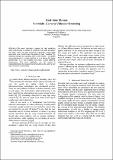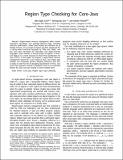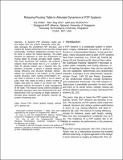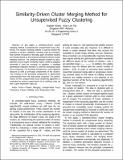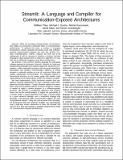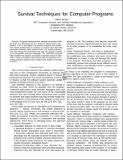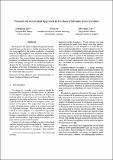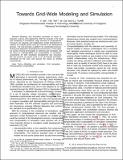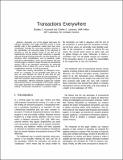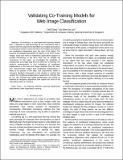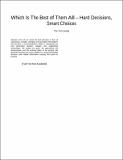Browsing Computer Science (CS) by Title
Now showing items 88-104 of 104
-
Real-time Mosaic for Multi-Camera Videoconferencing
(2003-01)This paper describes a system for high resolution video conferencing. A number of camcorders are used to capture the video, which are then mosaiced to generate a wide angle panoramic view. Furthermore this system is made ... -
Reasoning about Temporal Context using Ontology and Abductive Constraint Logic Programming
(2005-01)The underlying assumptions for interpreting the meaning of data often change over time, which further complicates the problem of semantic heterogeneities among autonomous data sources. As an extension to the COntext ... -
Region Type Checking for Core-Java
(2004-01)Region-based memory management offers several important advantages over garbage-collected heap, including real-time performance, better data locality and efficient use of limited memory. The concept of regions was first ... -
Relaxing Routing Table to Alleviate Dynamism in P2P Systems
(2006-01)In dynamic P2P networks, nodes join and depart from the system frequently, which partially damages the predefined P2P structure, and impairs the system performance such as basic lookup functionality. Therefore stabilization ... -
Similarity-Driven Cluster Merging Method for Unsupervised Fuzzy Clustering
(2004-01)In this paper, a similarity-driven cluster merging method is proposed for unsupervised fuzzy clustering. The cluster merging method is used to resolve the problem of cluster validation. Starting with an overspecified number ... -
Simple Bivalency Proofs of the Lower Bounds in Synchronous Consensus Problems
(2004-01)A fundamental problem of fault-tolerant distributed computing is for the reliable processes to reach a consensus. For a synchronous distributed system of n processes with up to t crash failures and f failures actually ... -
Solving a Class of Higher-Order Equations over a Group Structure
(2003-01)In recent years, symbolic and constraint-solving techniques have been making major advances and are continually being deployed in new business and engineering applications. A major push behind this trend has been the ... -
Solving Multiple Classes of Problems in Parallel with MATLAB*P
(2004-01)MATLAB [7] is one of the most widely used mathematical computing environments in technical computing. It is an interactive environment that provides high performance computational routines and an easy-to-use, C-like scripting ... -
StreamIt: A Language and Compiler for Communication-Exposed Architectures
(2003-01)With the increasing miniaturization of transistors, wire delays are becoming a dominant factor in microprocessor performance. To address this issue, a number of emerging architectures contain replicated processing units ... -
Survival Techniques for Computer Programs
(2006-01)Programs developed with standard techniques often fail when they encounter any of a variety of internal errors. We present a set of techniques that prevent programs from failing and instead enable them to continue to ... -
Towards An Automated Approach to Hardware/Software Decomposition
(2003-01)We propose in this paper an algebraic approach to hard-ware/software partitioning in Verilog Hardware Description Language (HDL). We explore a collection of algebraic laws for Verilog programs, from which we design a set ... -
Towards Grid-Wide Modeling and Simulation
(2005-01)Modeling and simulation permeate all areas of business, science and engineering. With the increase in the scale and complexity of simulations, large amounts of computational resources are required, and collaborative model ... -
Transactions Everywhere
(2003-01)Arguably, one of the biggest deterrants for software developers who might otherwise choose to write parallel code is that parallelism makes their lives more complicated. Perhaps the most basic problem inherent in the ... -
Using Cyclic Memory Allocation to Eliminate Memory Leaks
(2006-01)We present and evaluate a new memory management technique for eliminating memory leaks in programs with dynamic memory allocation. This technique observes the execution of the program on a sequence of training inputs to ... -
Validating Co-Training Models for Web Image Classification
(2005-01)Co-training is a semi-supervised learning method that is designed to take advantage of the redundancy that is present when the object to be identified has multiple descriptions. Co-training is known to work well when the ... -
A Web-based Question Answering System
(2003-01)The Web is apparently an ideal source of answers to a large variety of questions, due to the tremendous amount of information available online. This paper describes a Web-based question answering system LAMP, which is ... -
Which Is The Best of Them All – Hard Decisions, Smart Choices
(2003-01)How do we make the best decisions in face of voluminous, complex, changing, and uncertain information? We describe a multi-disciplinary effort in developing the next generation decision analytic and engineering technologies. ...

